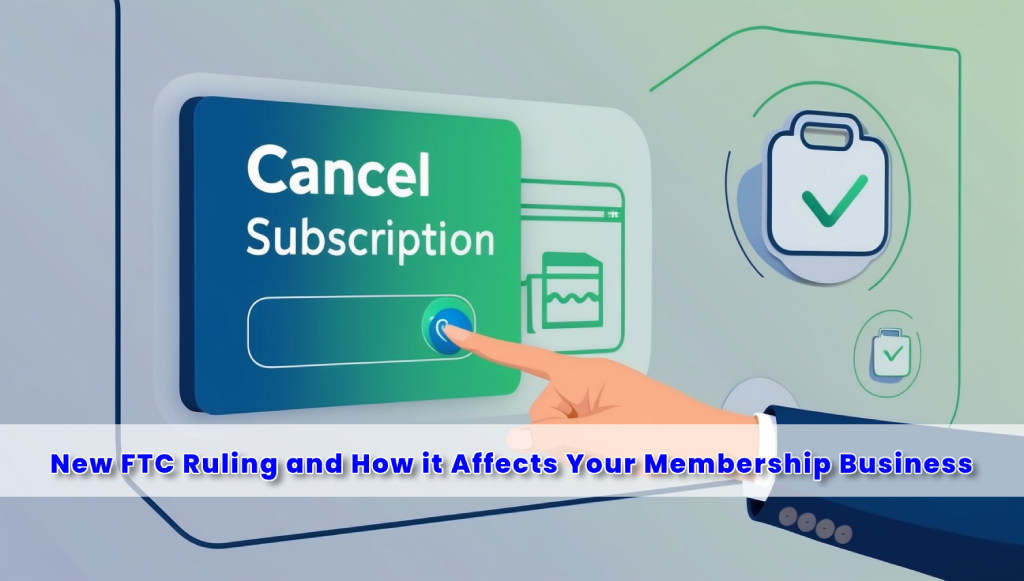
Understanding the FTC's New Click-to-Cancel Rule: What It Means for Subscription-Based Businesses
The Federal Trade Commission (FTC) recently finalized a groundbreaking rule designed to simplify the cancellation process for consumers with subscription-based services. Known as the "Click-to-Cancel" rule, this policy mandates that businesses offering subscriptions must provide a straightforward, one-click option to end these recurring payments. This change marks a significant shift in consumer protection, aiming to minimize frustrating hurdles when trying to unsubscribe. For businesses operating in this space, it’s a good time to review subscription cancellation workflows and ensure compliance with the new standards.
Key Highlights of the Click-to-Cancel Rule
The FTC's announcement on October 12, 2024, underscores that the Click-to-Cancel rule is part of a broader push to protect consumers from hidden fees and deceptive business practices. The rule enforces clear guidelines on how cancellations should be managed, including:
- One-Click Cancellations: Consumers must be able to cancel their subscription or recurring charges with a single click. This makes it easier to avoid the lengthy, multi-step cancellations that have historically discouraged customers from ending their subscriptions.
- Transparency Requirements: Businesses are required to present clear and upfront information about any recurring fees at the point of purchase, ensuring customers fully understand what they are signing up for.
- Renewal Notices and Consent: In addition to simplifying cancellations, businesses are now obligated to notify subscribers of renewals with sufficient time to opt out if desired. This notification ensures consumers aren’t automatically renewed without awareness or explicit consent.
These changes reflect the FTC’s commitment to addressing long-standing consumer frustrations around subscription management. The rule empowers consumers to make independent decisions about their subscriptions without being hampered by unnecessary roadblocks.
For more details, you can review the FTC's press release here.
How This Impacts Subscription-Based Businesses
If you’re a subscription-based business, the FTC’s Click-to-Cancel rule may require some immediate changes to your processes. Customer satisfaction now depends not only on offering valuable services but also on making it simple to cancel them. Businesses that fail to adapt to the Click-to-Cancel requirement could face potential legal consequences and damage to their reputations as consumer awareness of these protections grows.
Adapting to the Click-to-Cancel rule is especially important for SaaS platforms like ManageMemberships, which have already taken steps to provide flexible account management tools to their customers. This commitment to customer-centric design is evident in ManageMemberships’ recently introduced “upgrade account” feature, which simplifies changes and downgrades, thereby reducing the likelihood of churn. As ManageMemberships continues to innovate, the platform emphasizes compliance with local regulations, including the Click-to-Cancel rule, ensuring customers have options that meet both their needs and legal requirements.
Navigating "Call to Cancel" Requirements and Legal Compliance
While the FTC’s new rule applies at the federal level, state and local regulations around subscription management may also affect how cancellation processes are structured. For instance, some states impose additional requirements for subscription services. In response, ManageMemberships has taken a proactive approach to guide its customers on cancellation policies, warning them to avoid “call to cancel” requirements unless explicitly legal in their area. Encouraging users to review local laws helps businesses remain compliant and fosters greater transparency in customer relationships. For more insight into how these policies are implemented, see ManageMemberships' recent article on Account Upgrades and Churn Reduction.
Moving Forward: Best Practices for Subscription Management
For businesses navigating this new landscape, here are several best practices to adopt:
- Simplify Your Cancellation Process: Review your current cancellation procedure and make necessary adjustments to ensure it’s accessible in as few steps as possible, ideally following the one-click guideline.
- Communicate Clearly: Ensure customers receive clear, honest information regarding subscription fees, renewal policies, and cancellation terms. Transparency builds trust and mitigates misunderstandings.
- Stay Informed and Compliant: With laws around subscription management continuing to evolve, stay updated on both federal and local requirements. This proactive approach will help your business avoid compliance issues while also enhancing the customer experience.
- Encourage Customer Feedback: Regularly seek feedback on the subscription management experience. Making changes based on real customer experiences demonstrates that your company prioritizes consumer satisfaction.
The FTC’s Click-to-Cancel rule sets a new precedent for subscription management in the digital age. As more consumers demand transparency and ease in subscription-based services, businesses that align with these expectations are likely to thrive. For subscription services like ManageMemberships, these new requirements are not only an opportunity to ensure compliance but also to refine the user experience for greater customer satisfaction and loyalty.

